A few years ago, a friend posted about a hike he called the "Tunnels to Nowhere"—and I knew immediately that I had to go.
But there's a limited season for visiting this particular area—when it's not too hot and sun exposed, and not too wet and wintry.
And of course most of my weekends have been filled with other activities, save for the last 8 months of the pandemic.
That being said, I can't remember the last time I went on a proper hike.
I'd gotten it in my head, though, to spend a pandemic weekend with a friend off the beaten path in search of abandoned tunnels along what some people call the "Road to Nowhere." I'd calculated it at around 5 miles roundtrip and 750 elevation change.
That would've been absolutely doable for the 2010 version of me. The 2020 version of me? Not so much.
Spoiler alert: I survived the hike. I even completed the whole thing. But not without crying.
Still, in the end, despite my tears and blisters and bloody socks and embarrassment, it was worth it.
But instead of continuing down East Fork, past retaining walls and drainage channels...
...we turned off to tackle the hairpin curves along Shoemaker Canyon Road, named after miner Alonzo Shoemaker, who prospected the canyon during the mid-1800s.
The sign at the juncture warns that Shoemaker Canyon Road is "Not a Through Street"—and true to its word, we hit a locked gate where the pavement ended and parked our cars in the dirt turnout.
This area of the San Gabriel Mountains is part of what was designated in 1984 as wilderness area to preserve bighorn sheep—the
Sheep Mountain Wilderness area.
But before conservationists got ahold of it, the Los Angeles County road division set its sights on it for an entirely different purpose.
They were going to blast through the middle of nowhere to create an evacuation route that connected LA with Largo Vista in the
Antelope Valley.
It was during the height of the U.S.
Cold War effort to prepare in case of a nuclear bomb attack—which might explain why Shoemaker Canyon Road is sometimes called "Armageddon Highway."
Work on the civil defense project, which was supposed to extend for 25 miles, started in 1956. But by the time construction officially stopped in 1969, only about 4 miles of it had been finished.
Creating all those road cuts through solid rock proved to be too expensive after county budget cuts—and because much of the work on this dangerous terrain was being done by unskilled inmates from the county sheriff's
Detention Camp 14, progress was slow-going.
Over the course of its 16 years of construction, the Department of Corrections' involvement in Shoemaker Canyon Road earned it the nickname "Convict Road."
In the end, what probably doomed the project was how the interest in civil defense programs (like
fallout shelters and such) waned during the
Nixon administration—though it would be another 20 years before the "official" end of the Cold War and the fall of the Berlin wall.
There were two tunnels completed between 1956 and 1969...
...the first as early as 1961.
Both tunnels are similar in construction...
...including interlocking steel beams and raw, blasted-through rock...
...although the first one is longer than the second.
Taggers have made their mark on both abandoned tunnels, as taggers do.
The path to the second tunnel was never bridged...
...so to get to it, we had to trudge along a horseshoe-shaped curve on foot.
This later tunnel, circa 1964, marks the end of the hike...
...but of course we couldn't turn around before walking through to the very end.
The second tunnel appears to be more unfinished than its predecessor, with rebar holding in some exposed piles of rocks and cinder blocks.
It was cool and breezy in those tunnels—not dark enough for a flashlight or headlamp, but sheltered enough to make us feel like we were underground, though we could see daylight at both ends.
The
completionist in me was relieved to see everything there was to see, especially considering I hadn't been sure I could even make it to the
first tunnel.
But as soon as we hit the wilderness on the other side, where the road just kind of ends unceremoniously, I knew we still had to double-back and retrace our steps back to our cars.
It was discouraging to have such a hard time on what would be widely considered a relatively easy hike. But if I never hike again, I'm glad that this will have been my last.
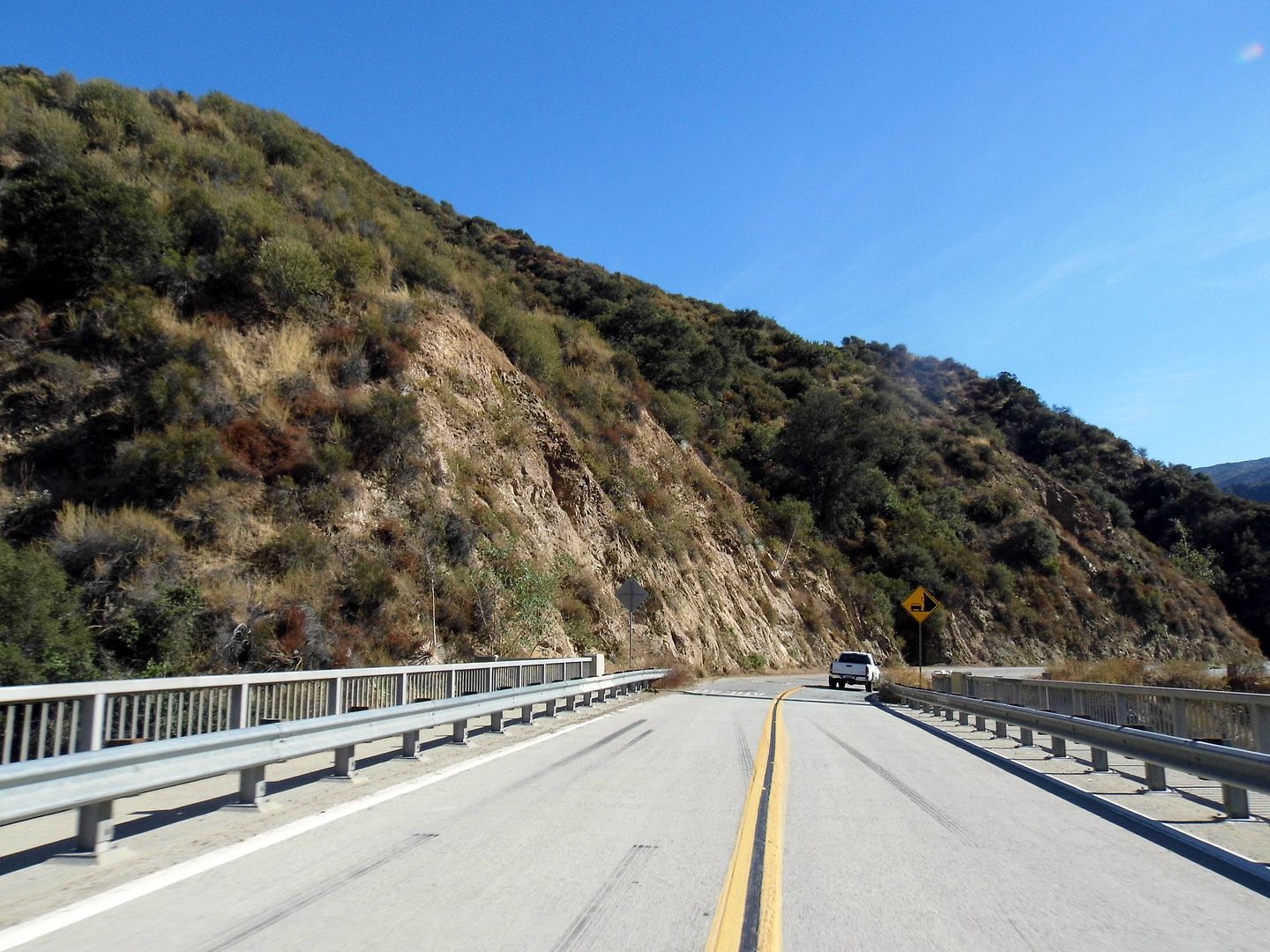
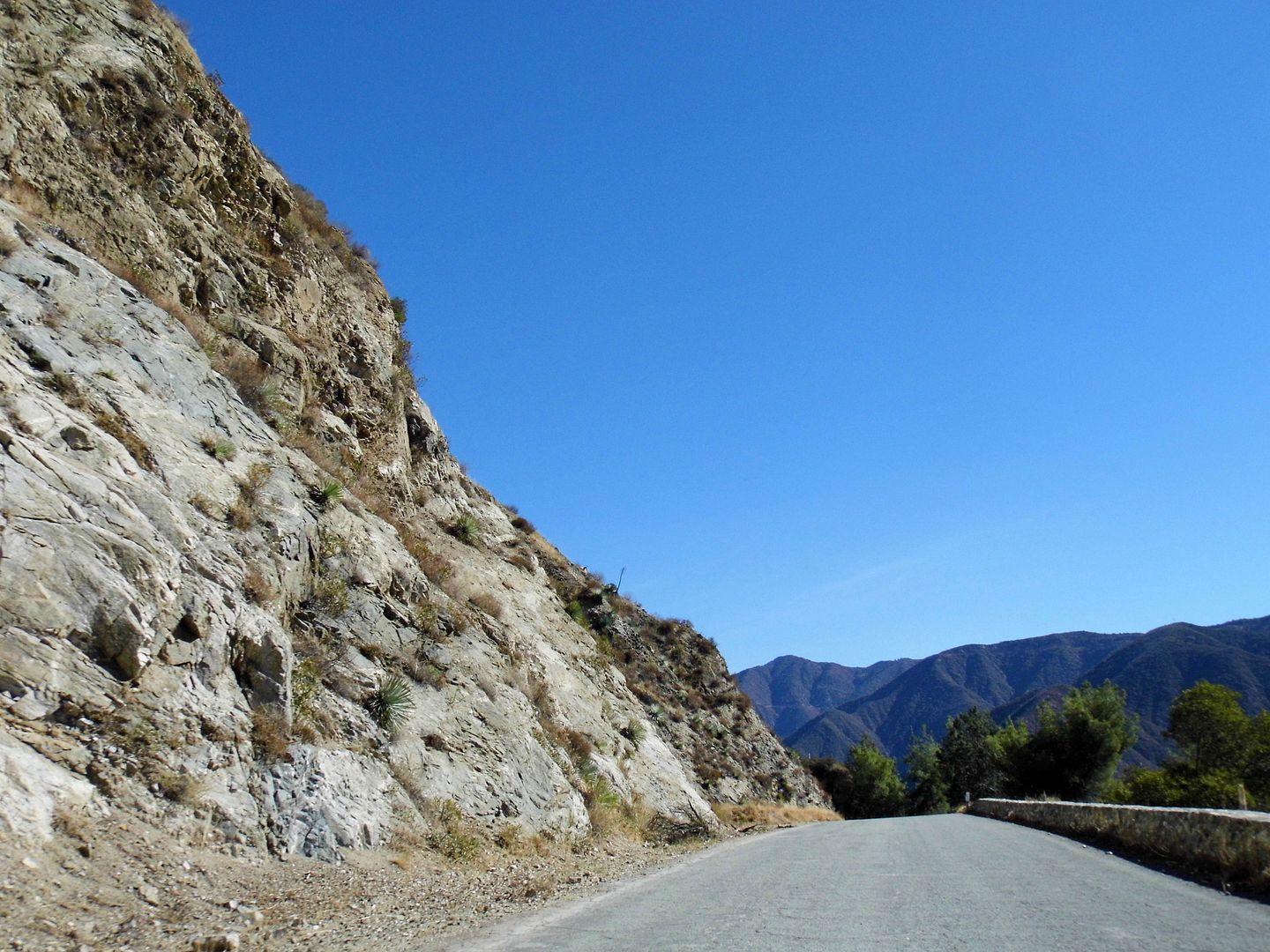
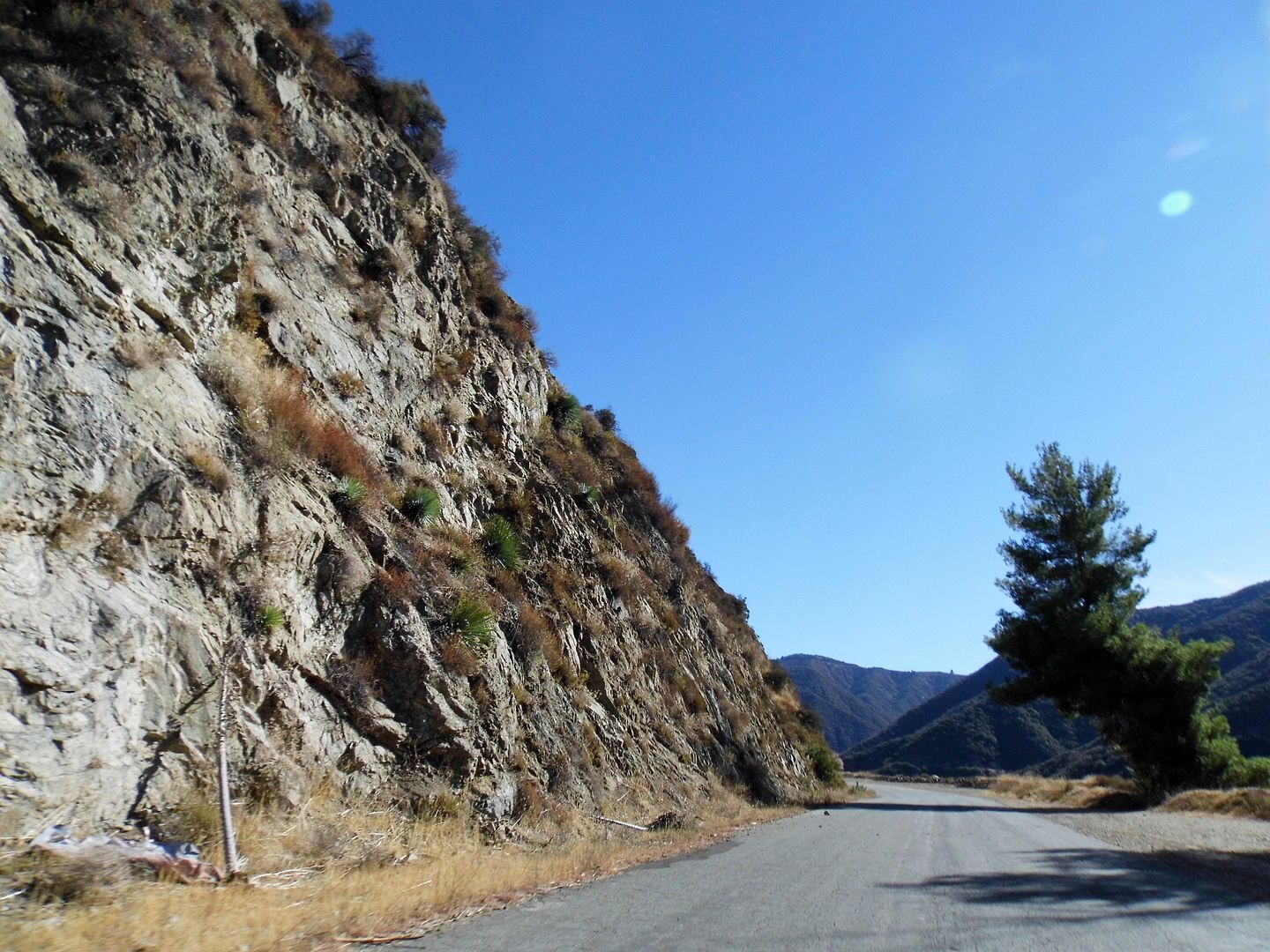
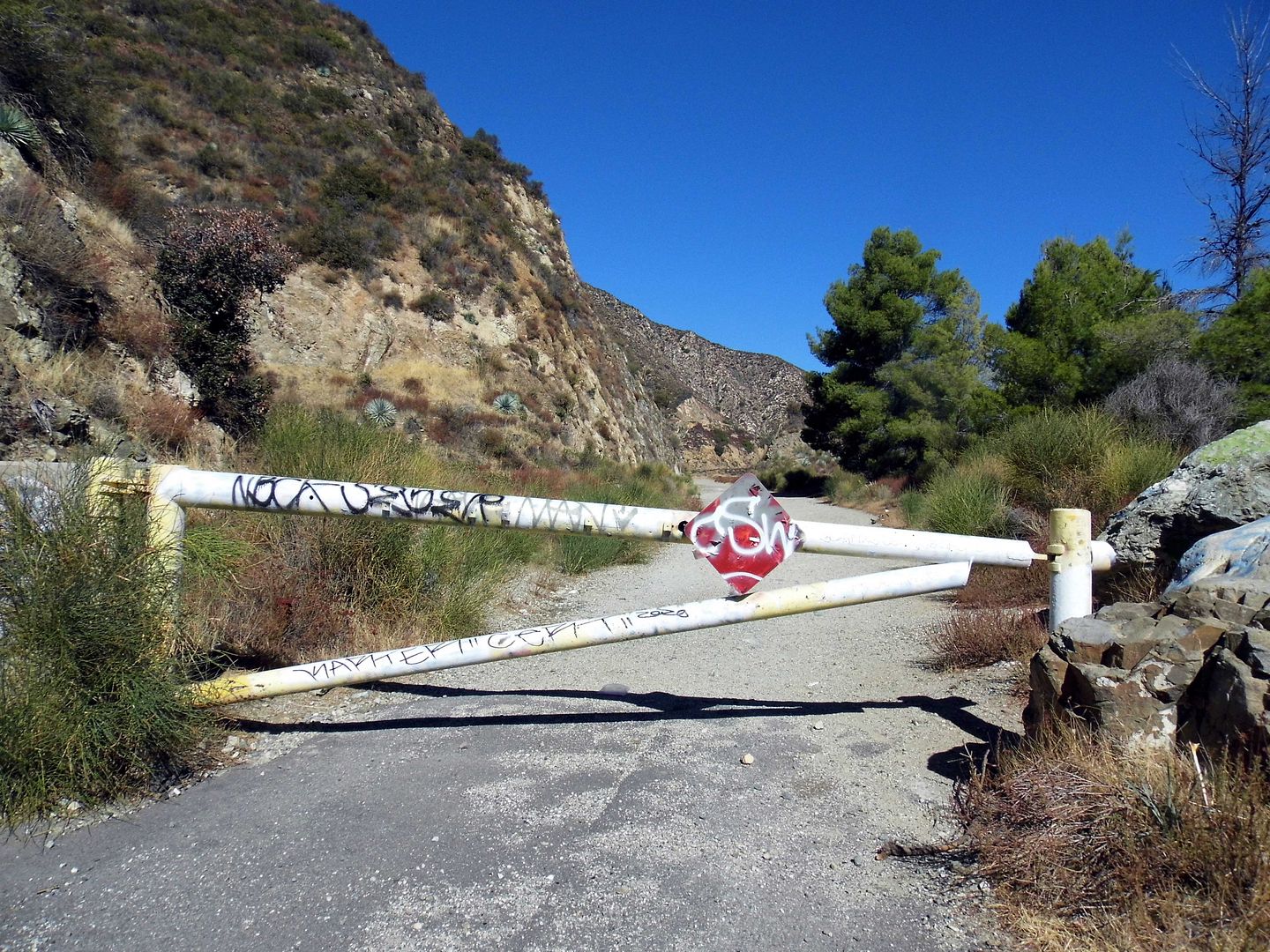
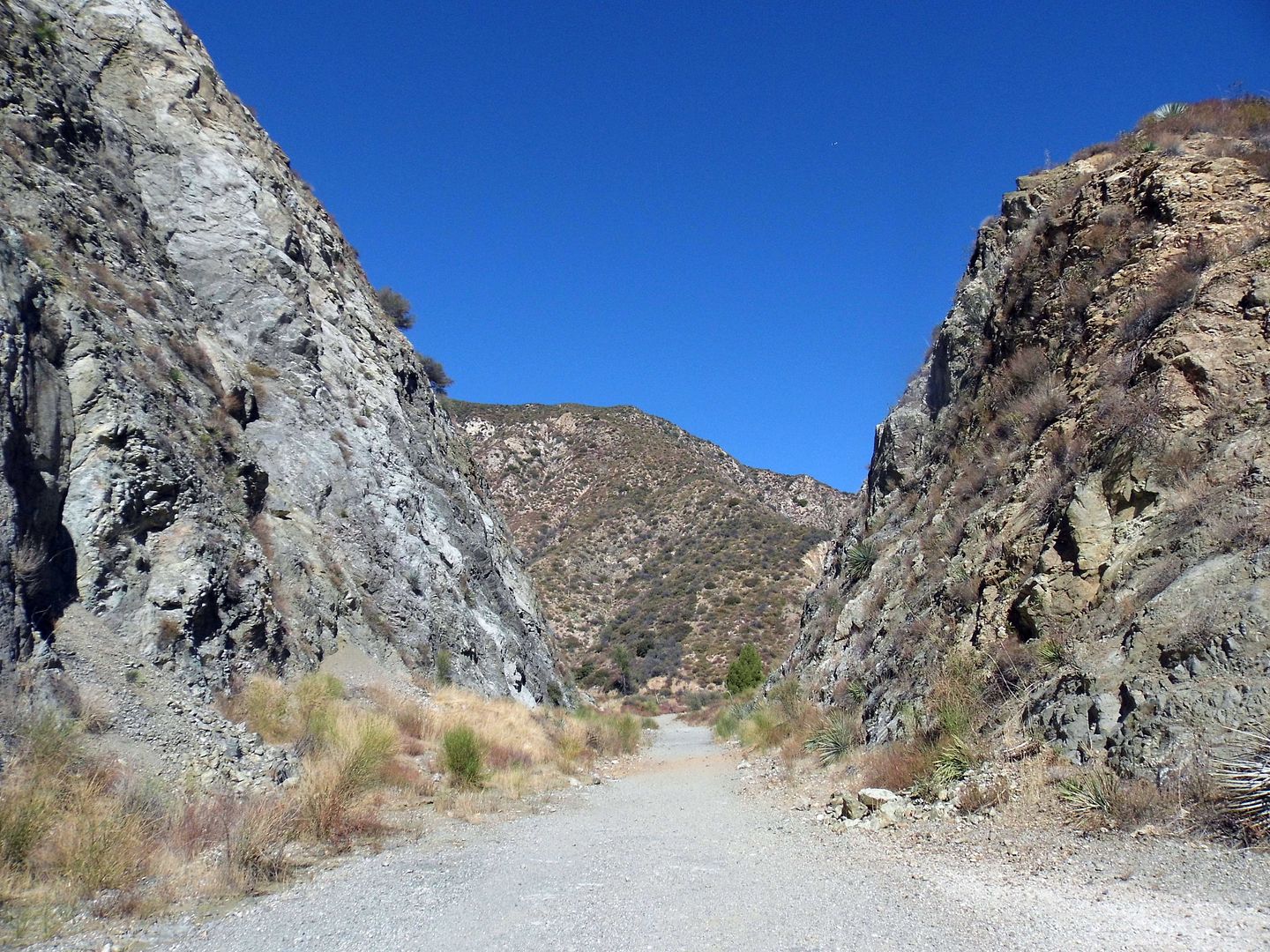

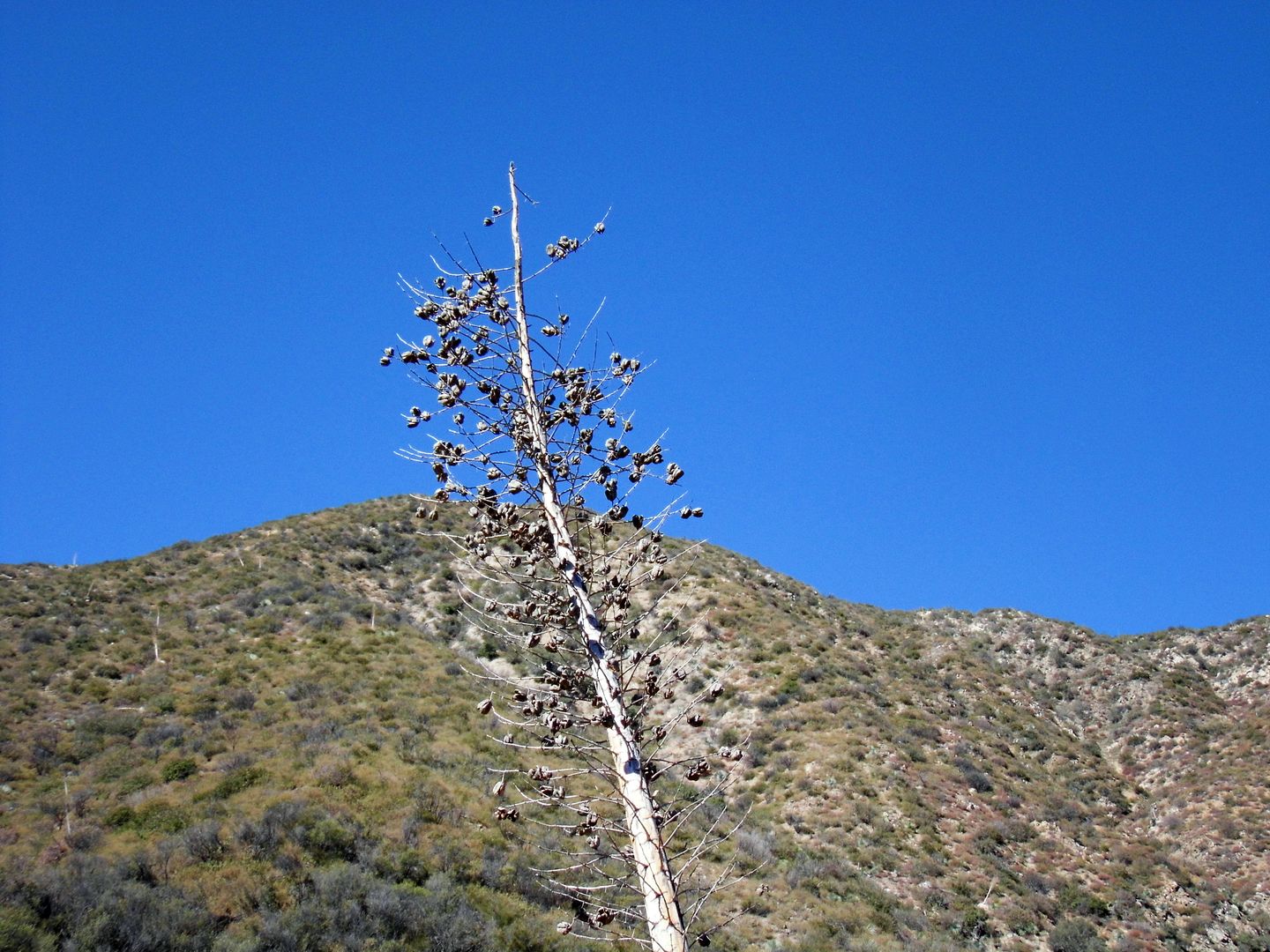

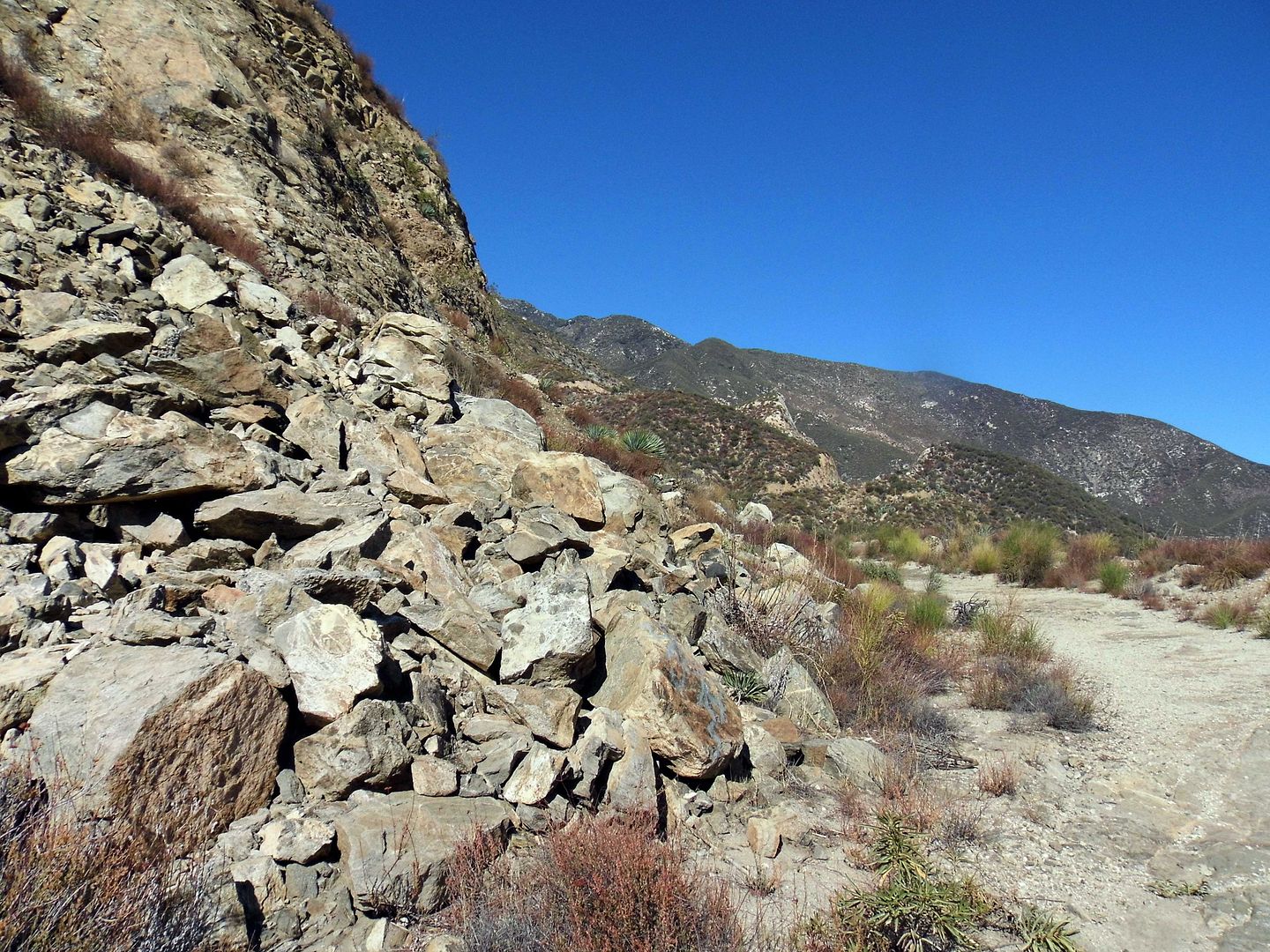

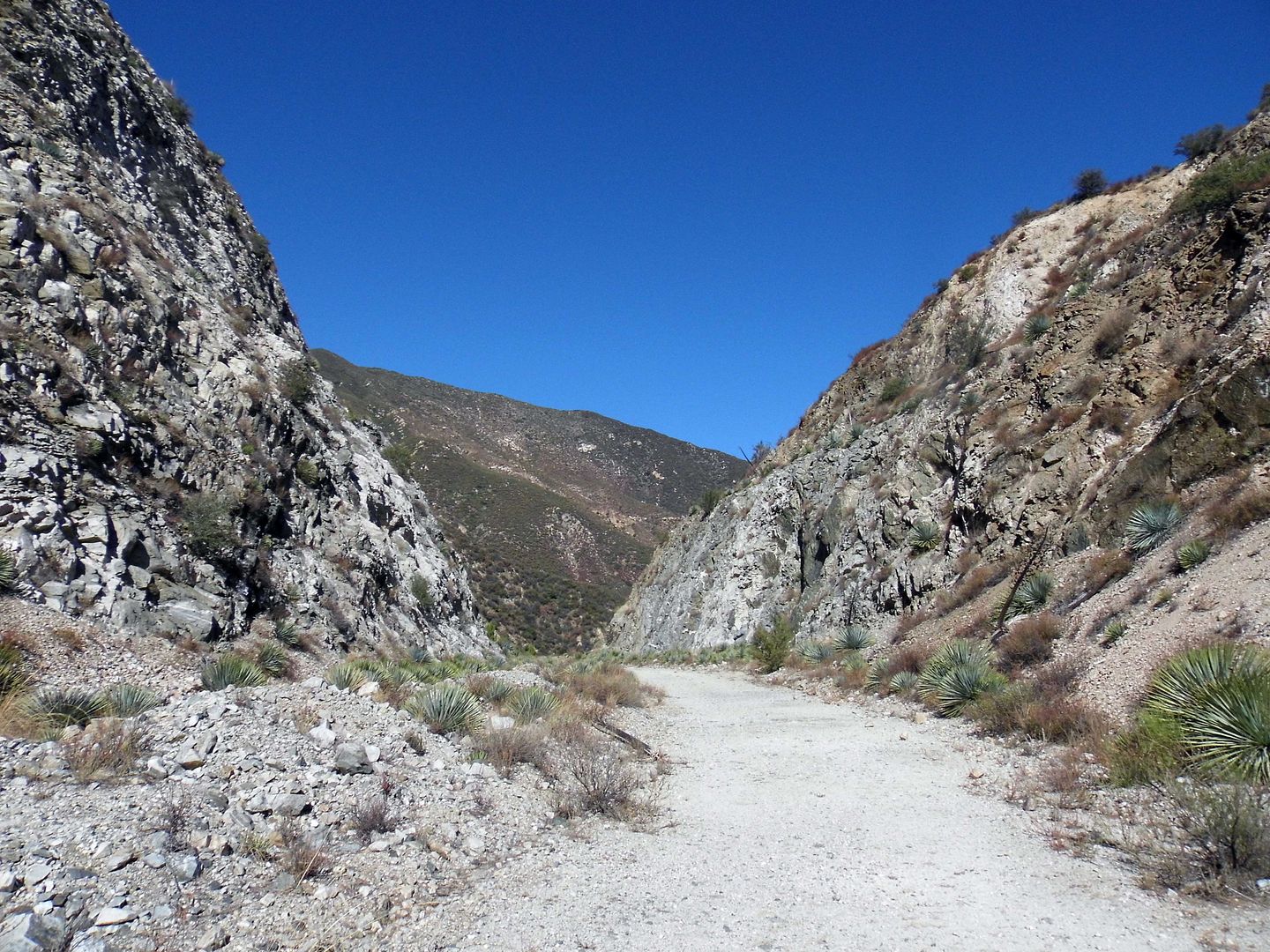

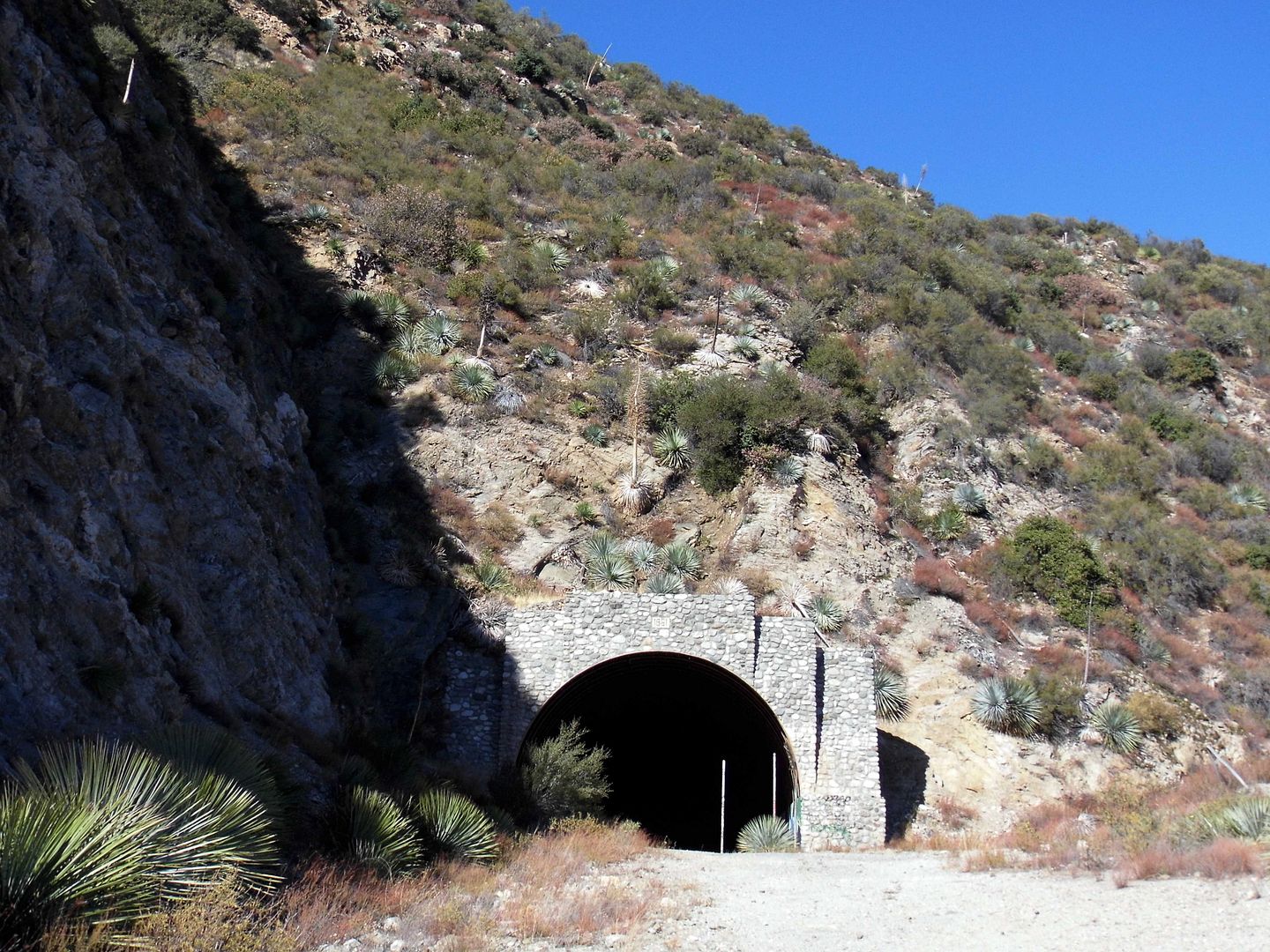
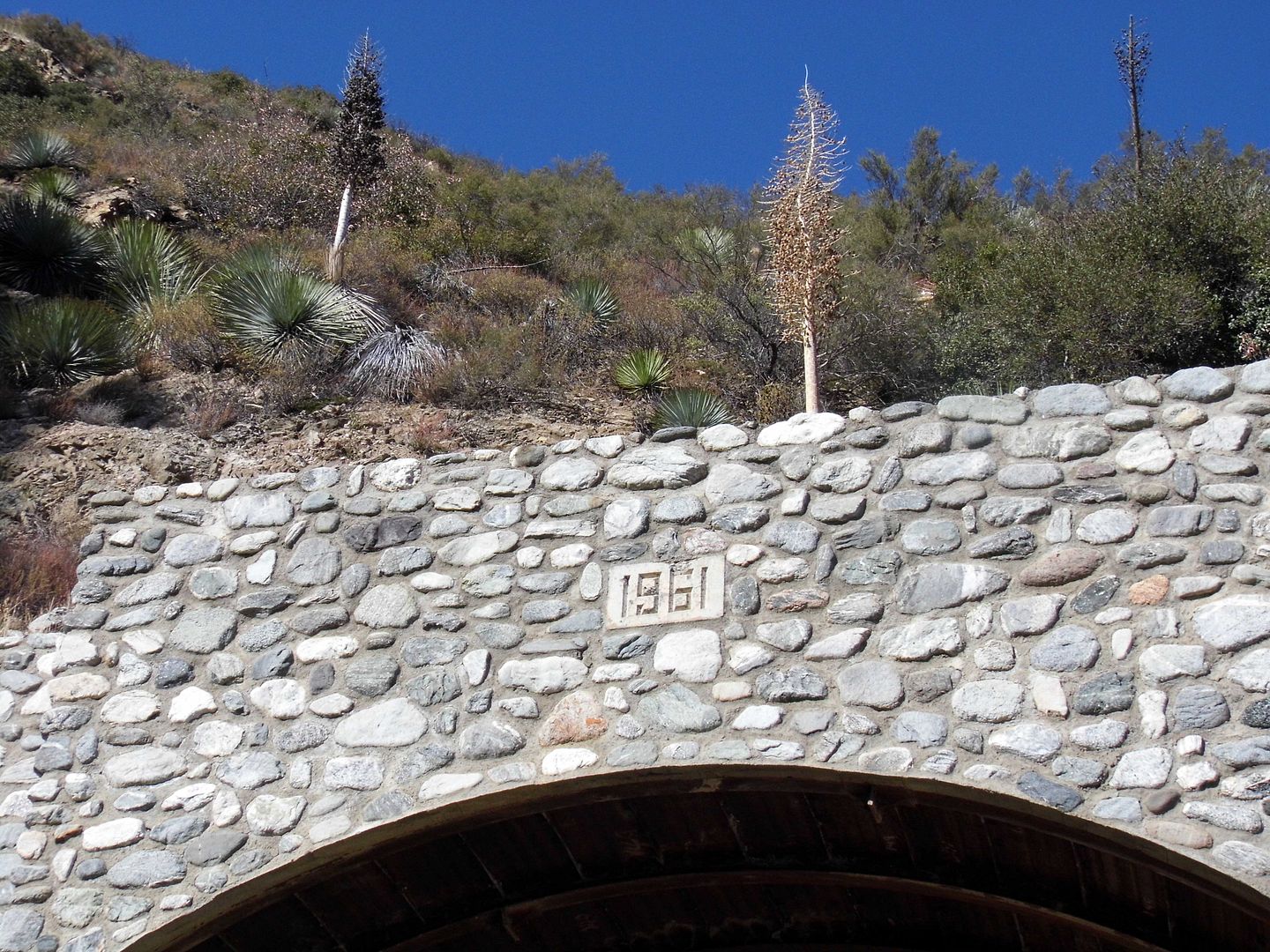

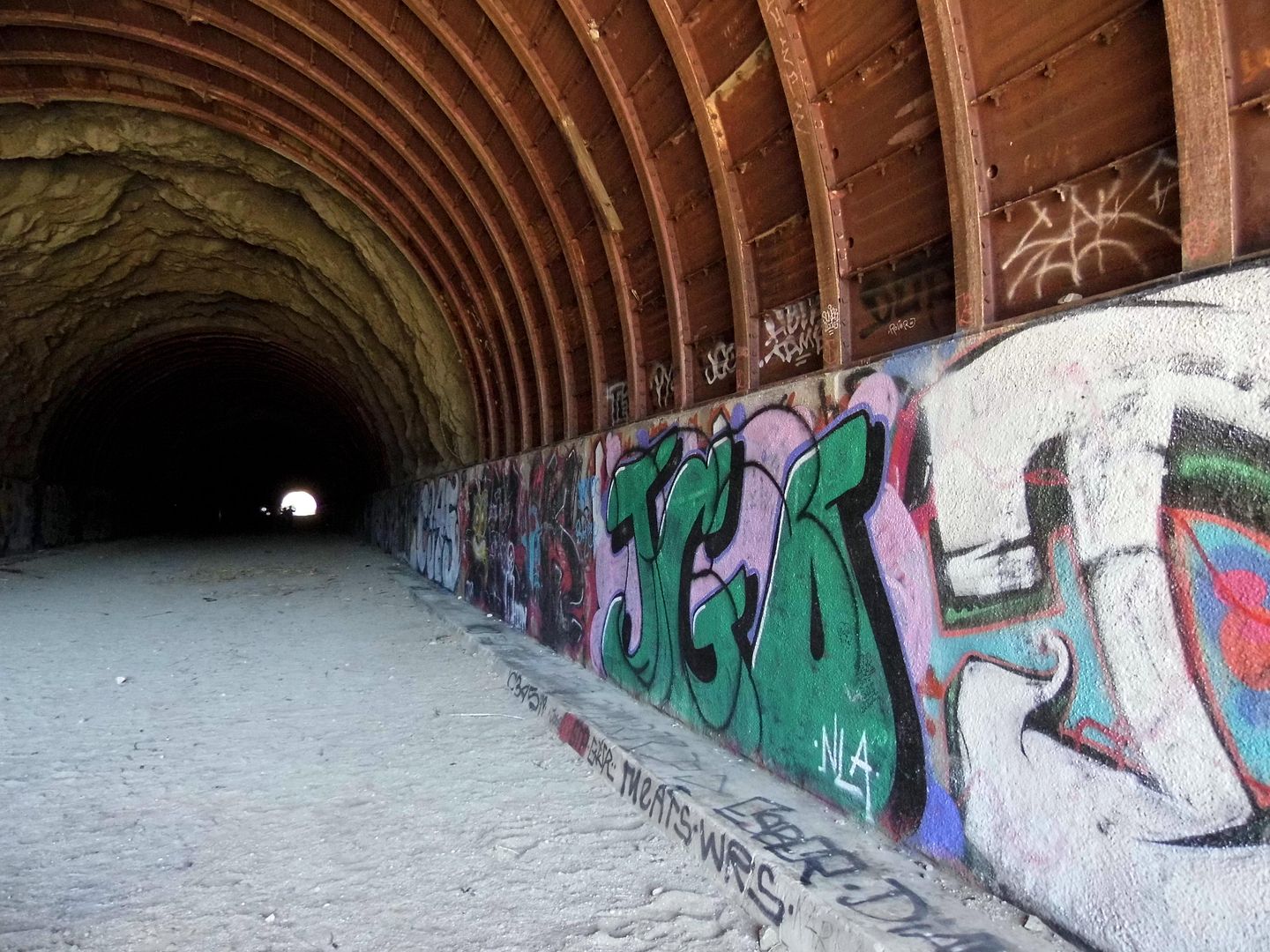
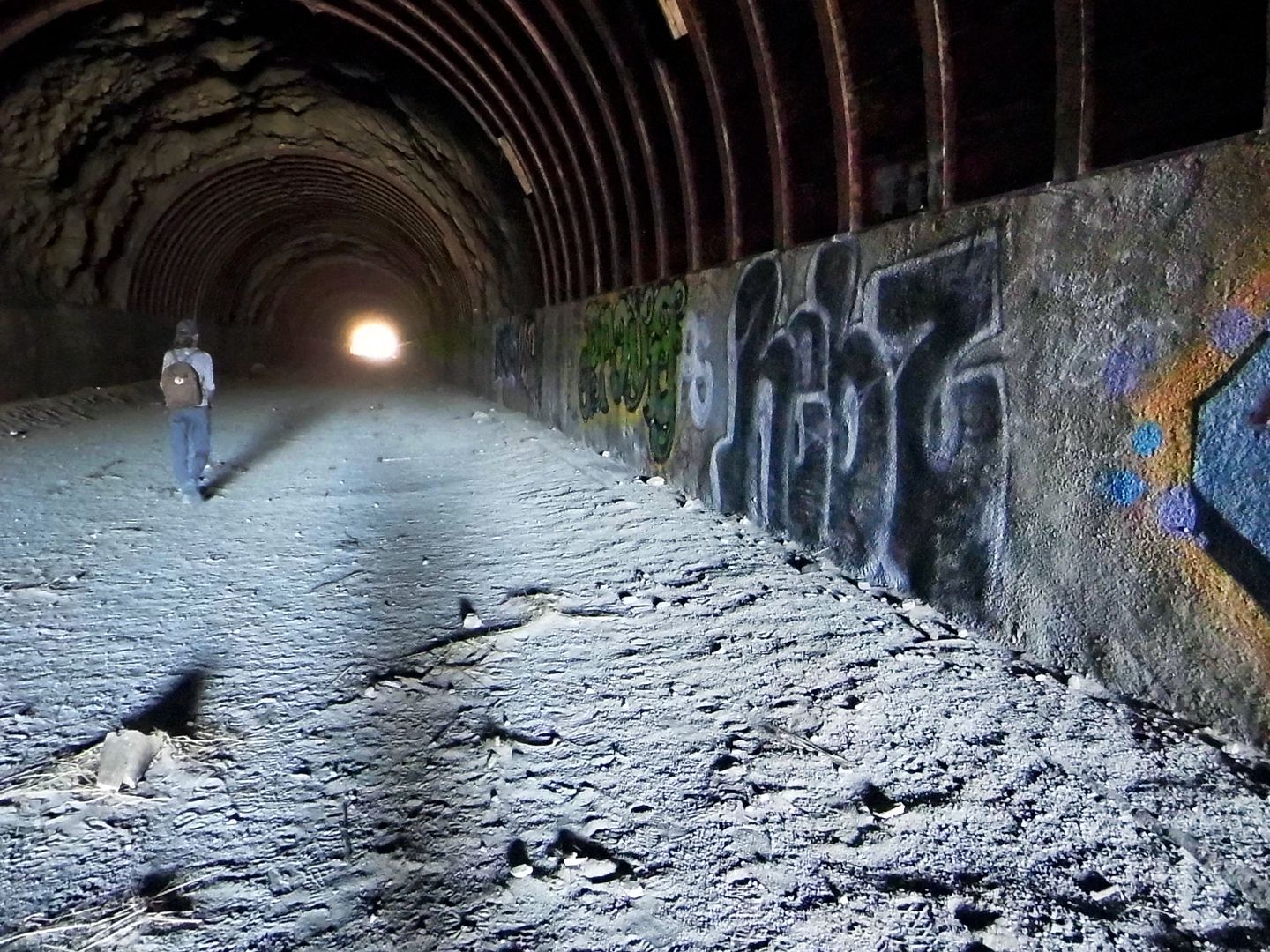

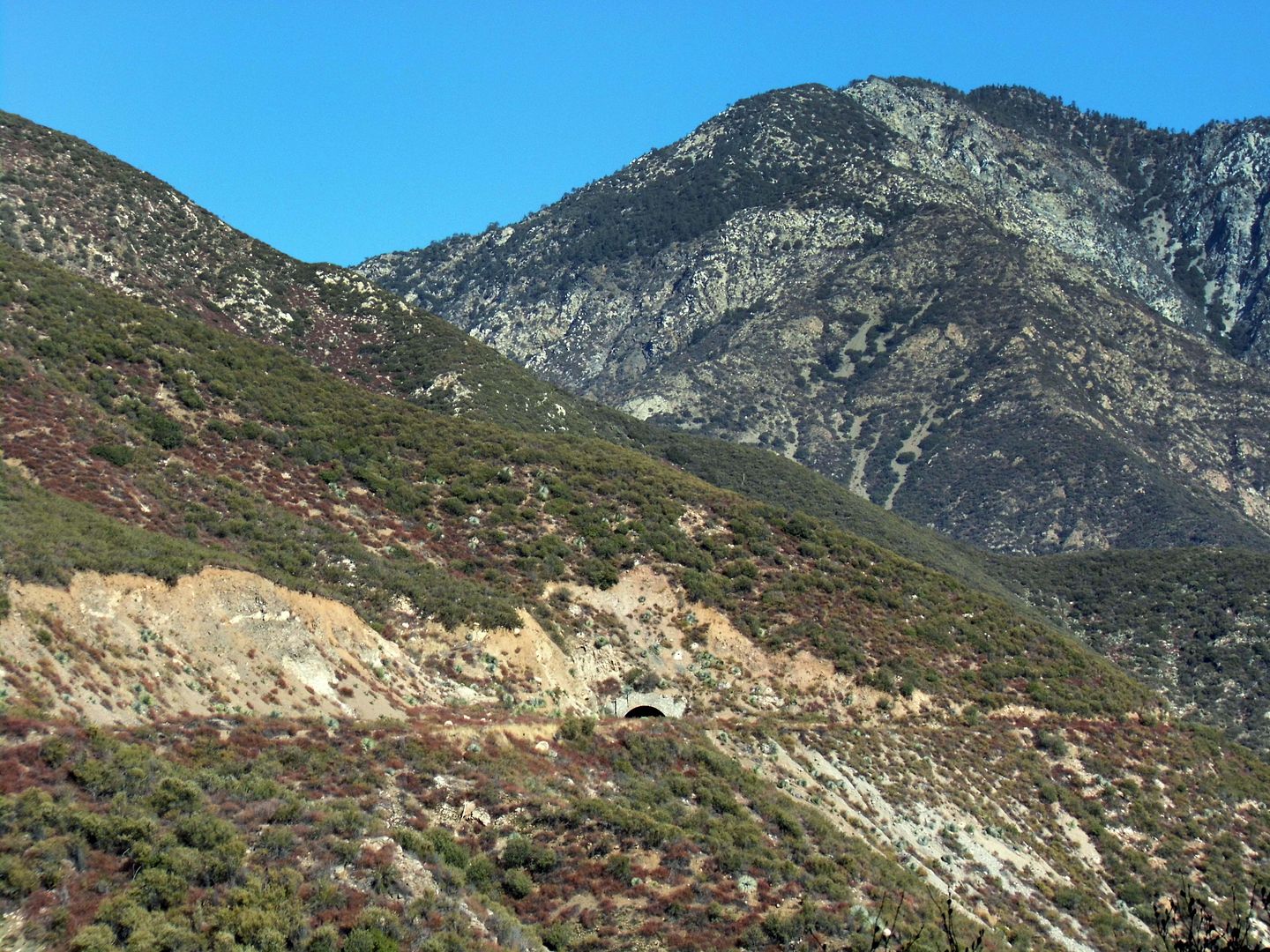
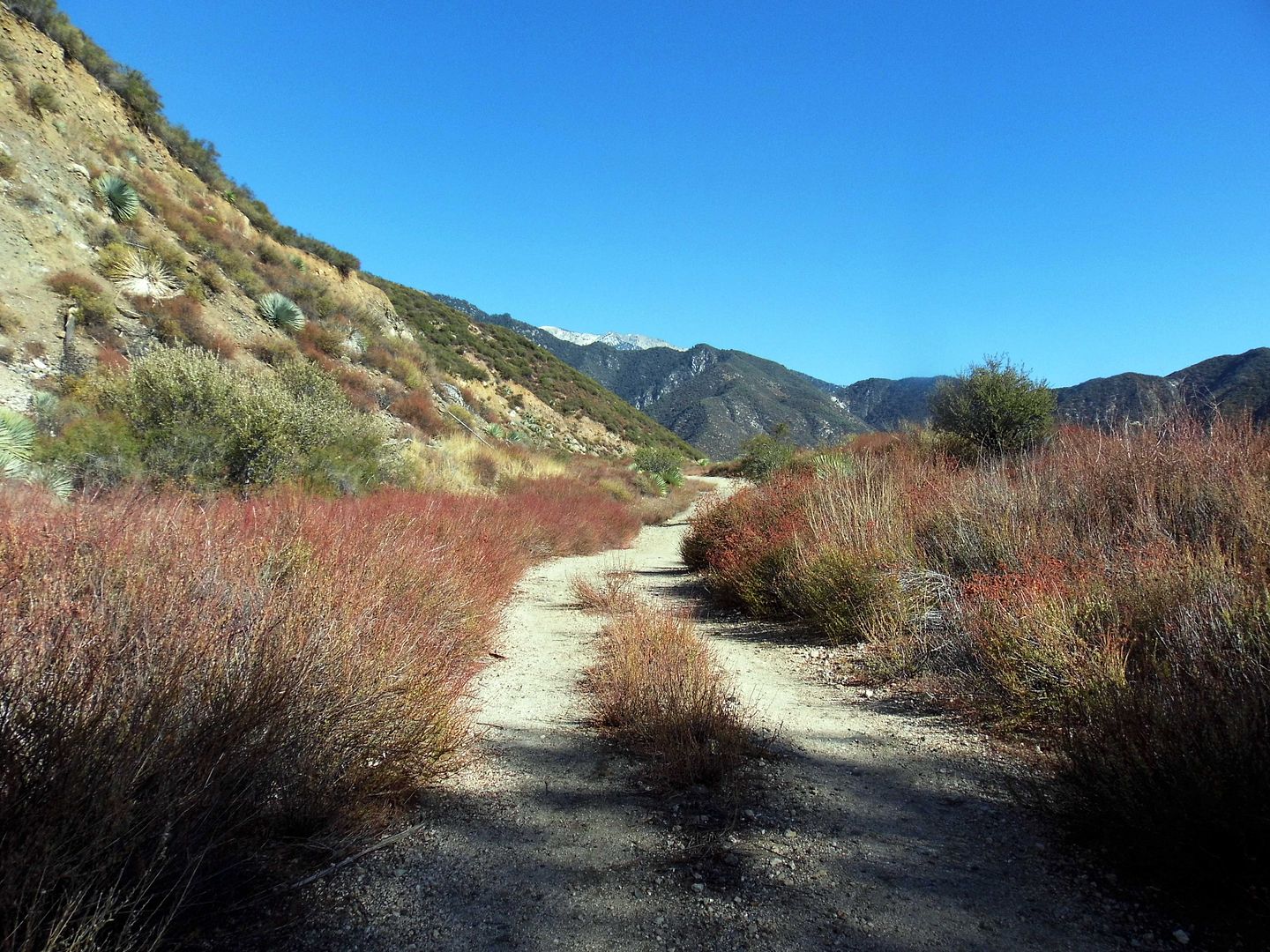

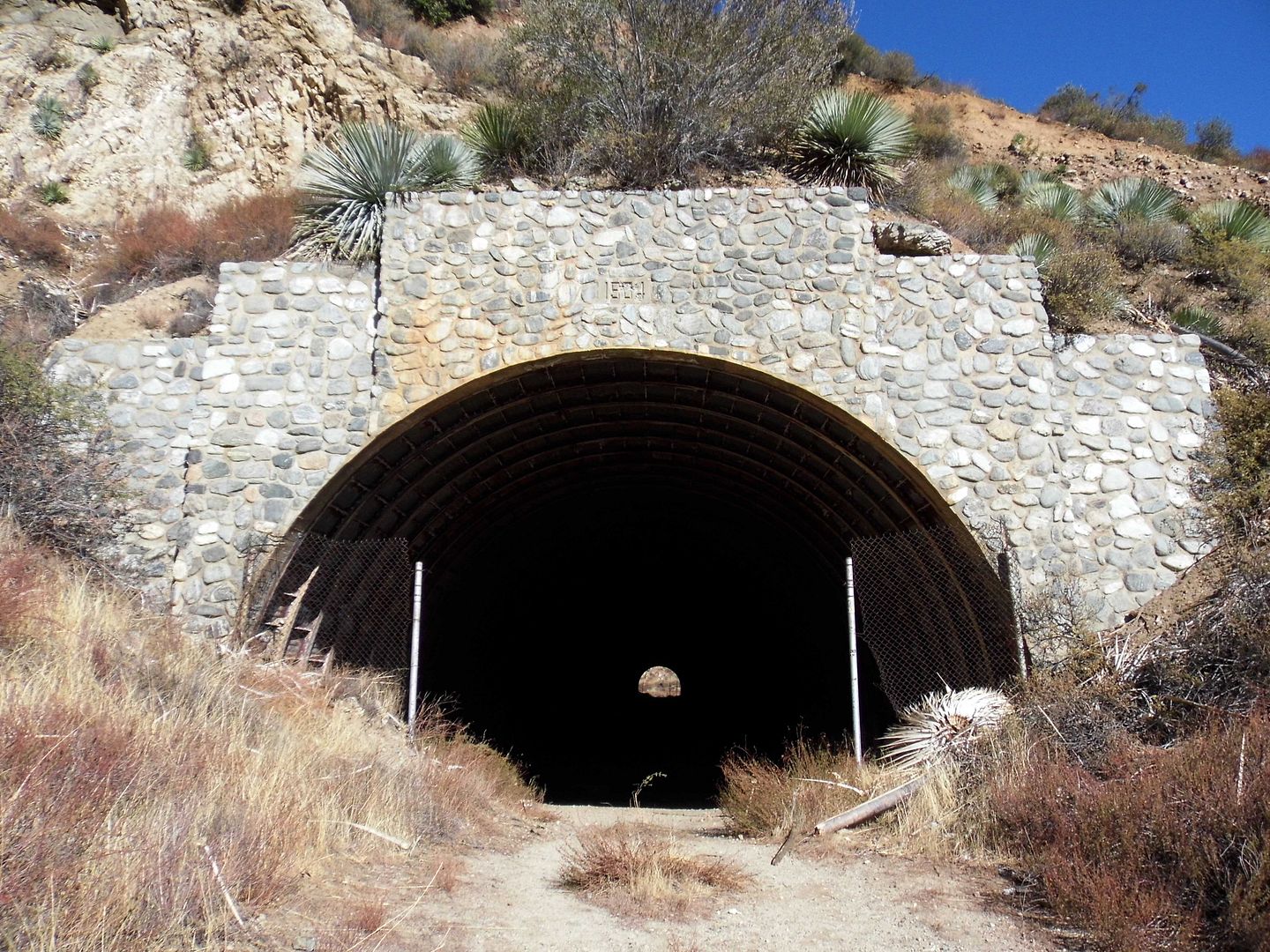

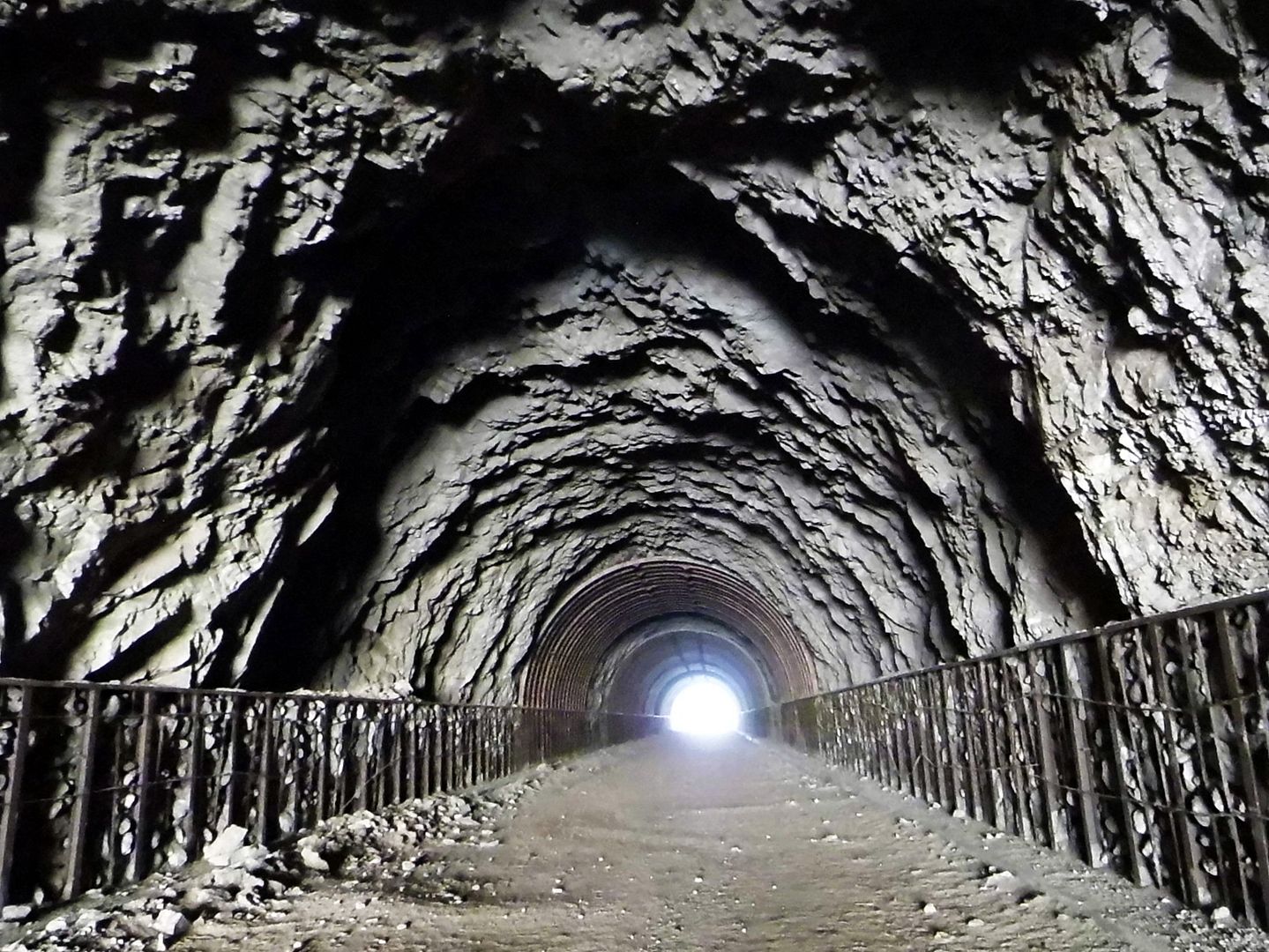
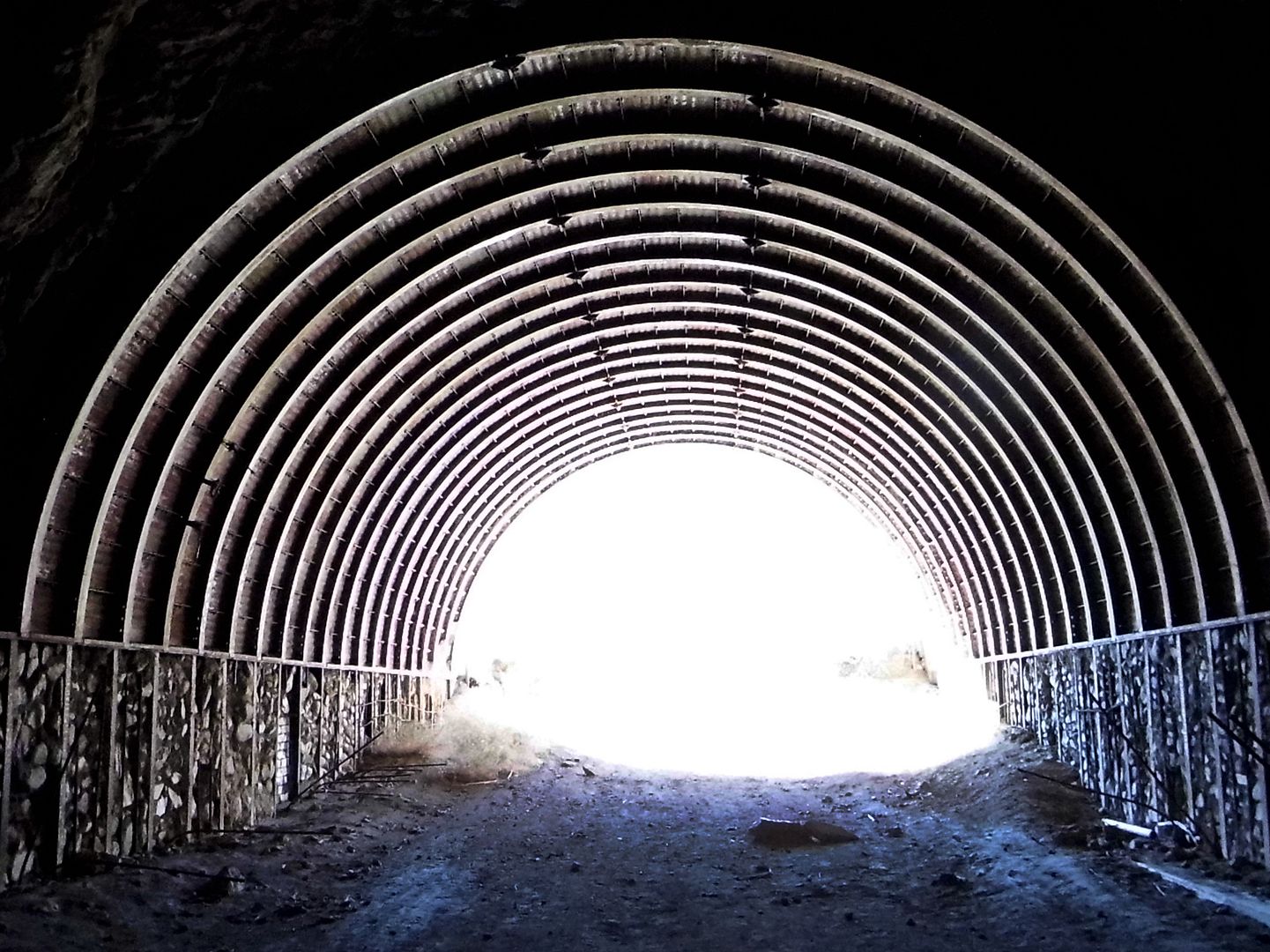


great
ReplyDelete